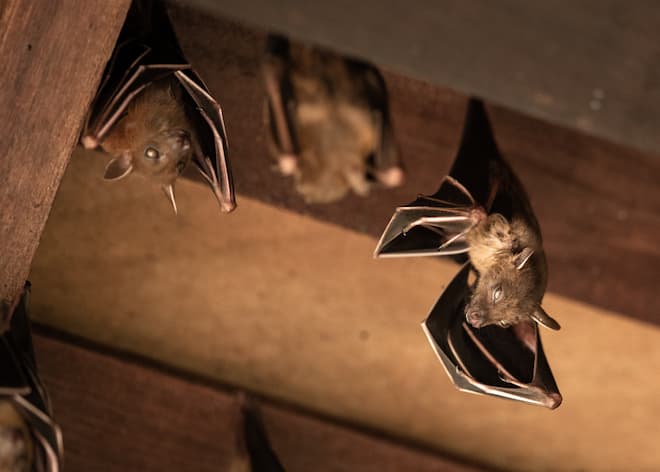The Big Brown Bat is a species of vesper bat that is widely present across North America and the Caribbean. Big brown bats are insectivores that consume a vast array of insects including beetles and other high-flying insects. The Big brown bat is beneficial to the agricultural industry because of the nature of these insects being invasive.
The big brown bat is nocturnal and therefore is active at night where it uses its echolocation to track down prey by producing a high-frequency sound from its voice box and then producing an accurate visualization of its environment. In Canada, these bats are mostly present in the southern part of Canada in mainly British Columbia, Alberta, Saskatchewan, Manitoba, Ontario, Quebec, and New Brunswick.
If you have bats in your property and need to get rid of it contact the professionals from Bat Control.
The bat mostly spends its time in deciduous forests meaning that these leaves will fall annually when it has reached their maturity. They will also occupy man-made buildings such as schools, homes, and corporate buildings just to name a few. In the late summer and early fall, these bats will migrate and hibernate in caves.
This hibernation often begins in November when they will move about 80 km away to find a nice and sheltered place away from humans. In modern times, their population has come under threat. Not because of deforestation per se, but because of a widespread fungal disease that marks their nose with a white spot. This disease is aptly called the White-Nose Syndrome. It has been reported that this disease has killed over six million bats since 2006. WNS syndrome will impact bat colonies where the death toll can leap from 80% to 100%. The origins of WNS are relatively unknown, but it has a habit of occurring in hibernating bats when they are inactive. Currently, there are no cures for these bats who suffer from WNS.
Bats are intrusive wildlife animals who break into residential places and commercial places. Since these bats fly at a high altitude, the attic seems to offer bats the perfect place since it coincides with their flight path as well. As a result, many bats have sought refuge in these attics, and not for any good reason. The attic mimics the natural habitat of these bats while offering them a safe and secluded area to roost in. Given their protected status, bats cannot be removed or disturbed during their maternity period. Instead, homeowners are urged to wait and then to call in help of bat removal specialists that can safely remove the bats and can also proof and seal the property completely so that no bat can get inside.
It is very important to know that no bat can be chased out by force or injured due to federal and local laws concerning the status of bats in Ontario. If you have more questions, please do not hesitate to contact us.
